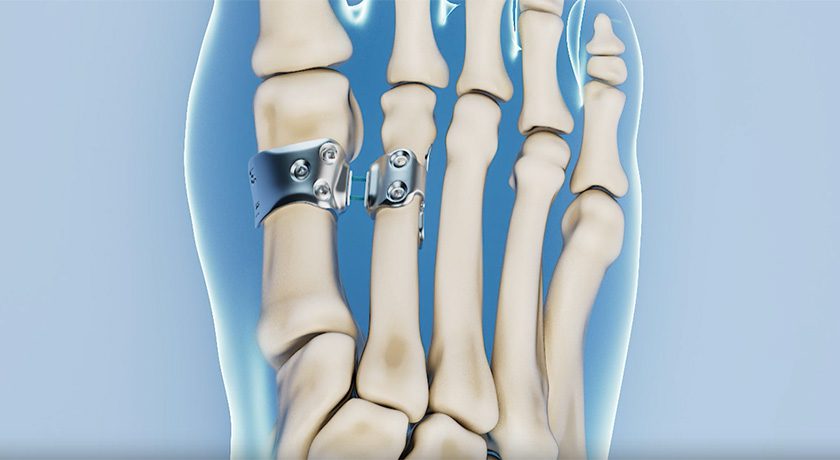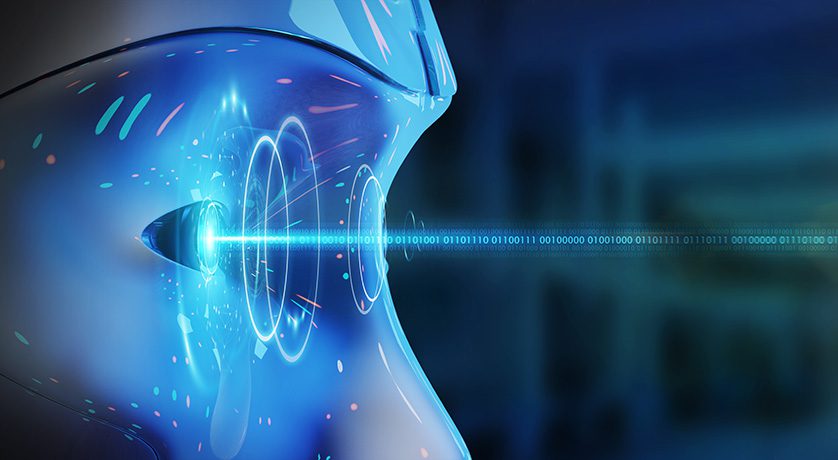

 Copy to clipboard
Copy to clipboard 
We estimate that the enabling technology market grew in the high single digits to a worldwide total of $1.4 billion in 2024.
The importance of enabling technology goes well beyond its sales figures. It is disrupting the competitive dynamics of the biggest orthopedic markets, like joint replacement and spine.
In 2025 we expect a healthy appetite for capital equipment, more competitive pressure at the top of the market and a focus on creation optionality within tech portfolios.
Strong Appetite for Capital Products
Sales no longer tell the entire story for capital technology demand with the advent of rentals, leases and volume agreements.
Some companies are still doing mostly outright sales, however. While Globus Medical offers a variety of placement methods, its enabling technology sales have grown significantly since 2020.
Technology’s ability to drive implant pull-through has companies offering significant flexibility in deal terms and package arrangements. Stryker, Globus Medical and Orthofix are among the companies that reported record quarters for technology placement at various points in 2024, indicating ongoing robust demand for these systems.
“We had another record quarter and year of installations in the U.S. and worldwide,” said Stryker VP of Investor Relations Jason Beach. “In the U.S., we approached two-thirds of knees and one-third of hips performed using Mako as we exited the year. We have momentum and significant opportunities remain as Mako adoption increases.”
The New Basis of Competition
Technology is changing the competitive dynamics in orthopedics.
Stryker changed the paradigm of joint replacement with its Mako robotic system. For years, Mako and cementless knees were a virtually unbeatable combination. Its competitors are just now starting to close the gap.
The technology race between Medtronic and Globus Medical did the same thing in spine.
Medtronic CEO Geoffrey Martha believes the very basis for competition is changing in spine due to enabling technology, and believes it will filter out smaller companies and even knock large competitors out of segments.
As an example, Stryker struggled to unlock the potential of its spine business, due in part to its lack of a spine robot for years. After its 2018 acquisition of K2M, Stryker’s overall spine sales had a CAGR of just 1.5%.
“The basis of competition in the spine market is rapidly changing,” said Mr. Martha. “You saw yet another example last month when a major competitor decided to get out of the spine business. We’re causing this disruption. We’re causing this disruption with our arsenal of differentiated enabling technology. Look, surgeons have to make a choice and they’re standardizing with the company that can offer them a full complement of innovative technologies.”
A new wave of competition is entering the market in 2025. We’ll see more robots in spine, knee and shoulders. More augmented and virtual reality navigation options are on the horizon, and we expect companies to increasingly focus on data.
Implants are still important, but it is becoming harder to be an implant-only company.
It’s All About the Ecosystem
Finally, companies are investing in building out wide-ranging portfolios of technology that give customers options.
Zimmer Biomet made early moves focused on optionality as it expanded its own systems, while also acquiring OrthoGrid and partnering with THINK Surgical.
Likewise, Globus expanded its Excelsius family of technology with its Hub and complementary pieces like its VR headset.
Globus is also investing in making its technology operate seamlessly with its implants. That type of cohesion across a portfolio is likely to become increasingly important as more surgeons adopt technology.
“Market interest remains high for our state-of-the-art Excelsius 3D imaging system with most surgeons immediately recognizing and appreciating the stark differentiation over existing systems and seeing the value of combining E3D with the ExcelsiusGPS or Hub. We’re delivering on our promise to create and launch our enabling tech ecosystem, an ecosystem that is designed and built from the ground up to communicate together seamlessly,” said Globus Medical CEO Dan Scavilla.
In 2025, we expect healthy demand for technology, stiffer competition at the top of the market and an increasing focus on optionality for the enabling technology market. Digital ecosystems are changing the competitive dynamics of the largest orthopedic segments, even before enjoying mainstream adoption.
We estimate that the enabling technology market grew in the high single digits to a worldwide total of $1.4 billion in 2024.
The importance of enabling technology goes well beyond its sales figures. It is disrupting the competitive dynamics of the biggest orthopedic markets, like joint replacement and spine.
In 2025 we expect a healthy...
We estimate that the enabling technology market grew in the high single digits to a worldwide total of $1.4 billion in 2024.
The importance of enabling technology goes well beyond its sales figures. It is disrupting the competitive dynamics of the biggest orthopedic markets, like joint replacement and spine.
In 2025 we expect a healthy appetite for capital equipment, more competitive pressure at the top of the market and a focus on creation optionality within tech portfolios.
Strong Appetite for Capital Products
Sales no longer tell the entire story for capital technology demand with the advent of rentals, leases and volume agreements.
Some companies are still doing mostly outright sales, however. While Globus Medical offers a variety of placement methods, its enabling technology sales have grown significantly since 2020.
Technology’s ability to drive implant pull-through has companies offering significant flexibility in deal terms and package arrangements. Stryker, Globus Medical and Orthofix are among the companies that reported record quarters for technology placement at various points in 2024, indicating ongoing robust demand for these systems.
“We had another record quarter and year of installations in the U.S. and worldwide,” said Stryker VP of Investor Relations Jason Beach. “In the U.S., we approached two-thirds of knees and one-third of hips performed using Mako as we exited the year. We have momentum and significant opportunities remain as Mako adoption increases.”
The New Basis of Competition
Technology is changing the competitive dynamics in orthopedics.
Stryker changed the paradigm of joint replacement with its Mako robotic system. For years, Mako and cementless knees were a virtually unbeatable combination. Its competitors are just now starting to close the gap.
The technology race between Medtronic and Globus Medical did the same thing in spine.
Medtronic CEO Geoffrey Martha believes the very basis for competition is changing in spine due to enabling technology, and believes it will filter out smaller companies and even knock large competitors out of segments.
As an example, Stryker struggled to unlock the potential of its spine business, due in part to its lack of a spine robot for years. After its 2018 acquisition of K2M, Stryker’s overall spine sales had a CAGR of just 1.5%.
“The basis of competition in the spine market is rapidly changing,” said Mr. Martha. “You saw yet another example last month when a major competitor decided to get out of the spine business. We’re causing this disruption. We’re causing this disruption with our arsenal of differentiated enabling technology. Look, surgeons have to make a choice and they’re standardizing with the company that can offer them a full complement of innovative technologies.”
A new wave of competition is entering the market in 2025. We’ll see more robots in spine, knee and shoulders. More augmented and virtual reality navigation options are on the horizon, and we expect companies to increasingly focus on data.
Implants are still important, but it is becoming harder to be an implant-only company.
It’s All About the Ecosystem
Finally, companies are investing in building out wide-ranging portfolios of technology that give customers options.
Zimmer Biomet made early moves focused on optionality as it expanded its own systems, while also acquiring OrthoGrid and partnering with THINK Surgical.
Likewise, Globus expanded its Excelsius family of technology with its Hub and complementary pieces like its VR headset.
Globus is also investing in making its technology operate seamlessly with its implants. That type of cohesion across a portfolio is likely to become increasingly important as more surgeons adopt technology.
“Market interest remains high for our state-of-the-art Excelsius 3D imaging system with most surgeons immediately recognizing and appreciating the stark differentiation over existing systems and seeing the value of combining E3D with the ExcelsiusGPS or Hub. We’re delivering on our promise to create and launch our enabling tech ecosystem, an ecosystem that is designed and built from the ground up to communicate together seamlessly,” said Globus Medical CEO Dan Scavilla.
In 2025, we expect healthy demand for technology, stiffer competition at the top of the market and an increasing focus on optionality for the enabling technology market. Digital ecosystems are changing the competitive dynamics of the largest orthopedic segments, even before enjoying mainstream adoption.

You are out of free articles for this month
Subscribe as a Guest for $0 and unlock a total of 5 articles per month.
You are out of five articles for this month
Subscribe as an Executive Member for access to unlimited articles, THE ORTHOPAEDIC INDUSTRY ANNUAL REPORT and more.
ME
Mike Evers is a Senior Market Analyst and writer with over 15 years of experience in the medical industry, spanning cardiac rhythm management, ER coding and billing, and orthopedics. He joined ORTHOWORLD in 2018, where he provides market analysis and editorial coverage.







